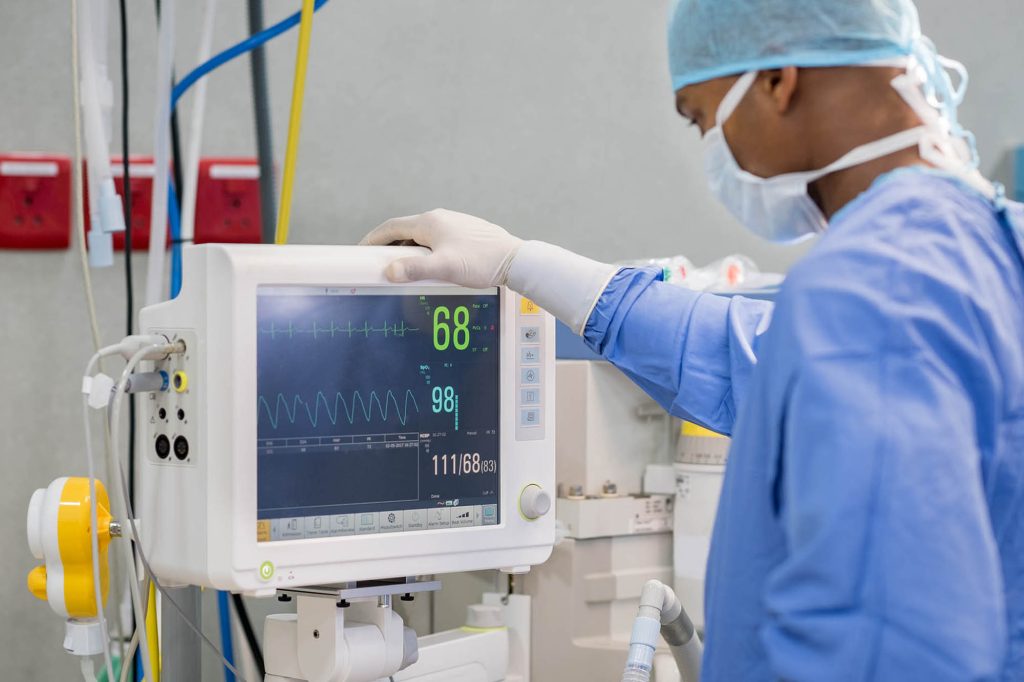Technological advancement has grown exponentially in the past decade. The healthcare sector is one of the many businesses that technology has heavily disrupted.
Today, big and small companies are using it to cultivate their growth. For advanced technology and state-of-the-art medical imaging solutions, contact Ultra Healthcare
In this blog, we’ll talk about five trends that are disrupting and will further disrupt healthcare in the future. Let’s begin.
5 Trends That Will Transform the Healthcare Industry
1. AI and machine learning
Thanks to its massive potential, AI is the most influential technology in the health sector. For instance, it can help healthcare teams accurately diagnose patients and suggest personalized treatments depending on several factors.
Moreover, machine learning is used on mobile apps to display relevant information for people suffering from certain illnesses. For example, patients can now check their symptoms and understand what’s ailing them. That’s without the need to visit a hospital physically.
Healthily (Your.MD) is one such company using this tech. In 2020, the global self-care platform experienced a 350% user growth in the last 12 months.
AI can also significantly boost the expertise of clinicians. They call it augmented intelligence. It’s where AI acts as an assistant to the clinician to improve their medical knowledge. In short, AI enhances a clinician’s expertise rather than replacing them entirely.
2. Wearables as healthcare tools
Smartwatches and fitness trackers are healthcare trends that are only going to grow moving forward. Their evolution has allowed them to penetrate the medical industry through 24-hour monitoring, real-time measurements, and data-gathering capabilities.
A recent example would be Apple collaborating with Johnson & Johnson for research regarding Heartline Study. The study aims to determine if Apple Watch’s electrocardiogram capabilities can decrease the chances of a stroke through early detection of afib or atrial fibrillation.
People with an irregular heartbeat are prone to stroke. Thus, health experts can potentially mitigate or even prevent stroke by continuously monitoring at-risk individuals.
Another use of wearables is positive behavioral change. South Australia researchers found that wearables can encourage people to practice regular exercise.
The researchers analyzed 400 studies with 164,000 global participants using wearable activity trackers (WAT). They found that tracking one’s physical activity levels led people to walk up to 40 minutes daily. That’s roughly equivalent to 1,800 steps, resulting in an average weight loss of 1kg (2.2) over five months.
Of course, wearables aren’t exactly accurate, especially when comparing one exercise over the other. For instance, a 30-minute HIIT workout will have a varying caloric burn than a 30-minute run.
However, wearables are great at tracking your workout’s intensity over time. This can be an excellent source of an external motivator for a lot of people.
After all, it can be rewarding to see your progress outlined in your fitness tracker. And most of the time, people are hesitant to break their workout streak.
3. Virtual Healthcare
This is another healthcare trend that’s exploded in recent years. Globally, telehealth stood at $144.38 billion in 2020. By 2028, that number will balloon to $636.38 billion.
That massive growth isn’t surprising, especially given the impact of COVID-19. For instance, remote health consultations went from 0.1% to 43.5% during the first months of the pandemic. Those who avail of this service were contented with their experience too, particularly younger people. Gen Z and millennials have 86% and 83% satisfaction ratings, respectively.
Virtual healthcare is also highly beneficial for people in remote locations. For example, if an area doesn’t have a nearby physician on hand, patients can turn to virtual healthcare to assist them with their needs.
It isn’t perfect, of course. But places like China and India, where it’s extremely difficult to reach specific populations, stand to benefit the most.
4. Extended reality
Extended reality is a broad term encompassing mixed reality (MR), virtual reality (VR), and augmented reality (AR). One of its primary uses is training clinicians on sensitive operations without putting patients at risk.
It can use VR to immerse the trainee in a virtual environment completely. Or it can rely on MR and AR to overlay virtual images on real-world objects.
Aside from training, extended reality is also used in cognitive behavioral therapy. Patients with anxiety, chronic pain, and schizophrenia can battle their fears in safe environments and non-threatening spaces.
For specific applications, the AccuVein system is a good example. It acts as a vein locator through blood flow heat detection, highlighting the vein on the patient’s arm and making it easier to insert injections.
5. Large data analysis
This is an extension of AI and machine learning applications in the medical sector. A sea of data from patients has inundated the healthcare industry.
Naturally, making sense of this vast information can be incredibly challenging. Fortunately, AI and machine learning are here to process this data.
For instance, AI can handle the workload instead of nurses and physicians conducting triage during first contact in the emergency room. As a result, it frees the medical team to oversee other crucial tasks in the hospital.
On a global scale, AI and machine learning can process data globally to make informed decisions about where and when an outbreak might occur. That preventive capability can save thousands, if not millions, of lives.
Healthcare Trends in 2023: What the Future Holds
With technology advancing at an exponential rate, it’s uncertain what the medical sector will look like in the future. But one thing is certain: the merging of humans and machines to deliver high-quality medical services will only grow from here.
That’s not counting massive corporations like Apple and Amazon increasingly involving themselves in healthcare. Of course, that can be a blessing or a curse depending on how everything unfolds.
But as it stands, it seems healthcare trends will highlight the convenience and accessibility that tech will bring forward. And that’s what Ultra Healthcare aims to achieve. For more information about products and services, email us at info@ultra-healthcare.com




